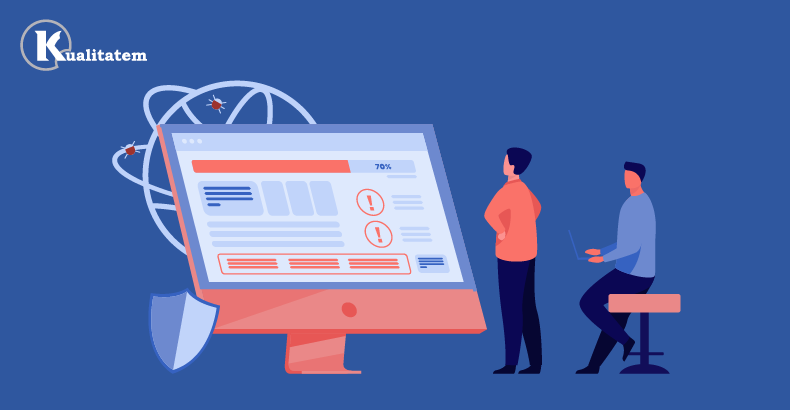Maximizing Efficiency with Temenos T24: Best Practices for Integration

- November 25, 2024
- admin
In the fast-paced and competitive financial services world, technology must be employed at the forefront to maintain an edge. The core banking system is well adopted by the financial organizations for operational optimization, customer experience, and efficiency enhancement in operations through Temenos T24. However, to fully benefit from the features provided by Temenos T24, proper integration will be of great importance. This blog explores the optimal ways for Maximizing Efficiency with Temenos T24 so that financial organizations can realize its full benefits.
Temenos T24 is an all-encompassing core banking system precisely designed in order to deliver the complete banking activities. The module-design pattern gives the financial organization the opportunities to choose the modules they require to be released live with just those modules. The T24 solutions offer functionalities in real time processing, multiple currency support, and high-grade security in features. This makes it perfect for banks willing to upgrade their core operational systems.
The Importance of Integration
Why: Temenos T24 integration with external applications and pre-existing systems is critical for several reasons:
The free flow of data will then be facilitated, thus minimizing chances of manual errors; operational effectiveness will thereby improve. A better customer experience may be delivered through the connection of T24 to customer relationship management (CRM) systems. Integration of Risk Management and Compliance System helps banks in meeting regulatory requirements and mitigating potential risk.
Cost Savings: Through effective integration, many process sundries could be automated and thus reduced to manual intervention, saving much time and resources.
Best Practices on Implementation of Temenos T24
Planning and Strategy
Well, before the integration should be a clear planning and strategy. And some of these factors are listed below:
Objectives: Define very clearly what you want to accomplish through integration. It would be improvement in customer service, cost savings in operations, or tighter compliance.
Evaluate Existing Systems: Undertake a comprehensive evaluation of your existing systems and infrastructure in order to ascertain possible integration opportunities and obstacles.
Integrate Using Proper Tools: The integration tools and platforms must support continuous integration with Temenos T24 and other existing systems. Actually, most people prefer APIs based on their flexibility and scalability.
Engage Stakeholders: Synchronize the IT teams along with business users and external partners while ensuring everyone is aligned to the integration goals and timelines.
Data Mapping and Transformation
Data mapping and transformation are critical steps in the integration process. Here’s how to approach them:
Data mapping consists of selecting the appropriate data fields to integrate and correlating these mappings between different systems. It is also necessary to have compatible data formats and structures, avoiding inconsistency.
Data Transformation: Convert the data, if necessary, to the format required by the target system. In this, there may be a need to cleanse, normalize, and validate data.
Data Validation: Absolutely, establish adequate data validation procedures so that any integrated information is very accurate and uniform in all systems.
API-Based Integration
Application Programming Interface is among the most widely used options to integrate Temenos T24 since they are quite flexible and scalable. Here are some best practices for API-based integration:
Use Standard APIs: Use any of the standard APIs that Temenos T24 provides for smooth and unperturbed integration.
Implement security in APIs: ensure APIs are properly implemented with authentication, authorization, and encryption mechanisms, and so on to protect sensitive data. Monitor the performance of the API so as to identify possible issues that may create bottlenecks in the integration process.
Quality control and Assessment
Complete evaluation and quality control are crucial to ensure that the integrated system works as designed. Among other things, consider the following:
Unit Testing: Implement unit testing to ensure that distinct components of the integration function appropriately.
Integration Testing: Perform integration testing to ensure that all systems work together effectively.
In User Acceptance Testing, end-users are activated to determine whether the integrated system meets their identified needs and expectations.
Regression testing: Reggie must test for regressions so that the integration does not introduce any new bugs or side effects into the already existing system.
Change Management and Training
Nevertheless, effective running of the integrated system greatly depends on excellent change management and adequate training. The following details some best practices:
Communicate the changes and benefits of the integrated system to all appropriate stakeholders.
Facilitate Instruction: Train users systematically to ensure they are able to thoroughly use the new system.
Support and Documentation: Provide appropriate support and documentation to guide users and assist them if they encounter difficulties.
Ongoing Surveillance and Upkeep
After integration, continuous monitoring and maintenance must also take place in a system so it remains effective and efficient. The following are some of the key considerations:
Performance Monitoring: Constantly test the functionality of the integrated system to identify possible malfunction or avenue of improvement.
Update and Patch Management: Regularly apply the latest patches and updates to keep the system secure and functional.
User Feedback: Gather all the responses from the users and study them for required changes in the feature.
Benefits of Successful Integration
The successful integration of Temenos T24 presents numerous benefits, which encompass:
Enhanced Operational Efficiency
Integration automates a lot of manual processes, thus saving time and effort needed to complete many tasks, which means improved operational efficiency and saving on costs.
Increased User Satisfaction
The bank can, therefore, achieve a more personalized and seamless experience for customers by integrating T24 with the CRM and other customer-facing applications leading to higher customer satisfaction.
Better Adherence and Risk Reduction
Integration of solutions to a Risk Management and Compliance system helps banks comply with regulatory requirements thus prevent risks and avoid possible penalties due to non-compliance.
Conclusion: Enhancing the Performance of Temenos T24 Implementation
- Faster Time-to-Market: Integrated systems allow banks to come to market with new products and services faster, reducing time-to-market and improving responsiveness to market changes.
- Complex but Rewarding Task: Integration of Temenos T24 with existing and third-party applications requires careful planning, implementation, and maintenance.
- Enhanced Performance: Following best practices ensures optimal performance of core banking systems and enhances operational efficiency.
- Improved Customer Experience: A seamless integration delights customers by offering better services and streamlined operations.
- Compliance and Risk Management: Effective integration delivers comprehensive compliance and risk management capabilities.
- Sustainable Success: Implementation of the best strategies leads financial institutions to achieve maximum usage of the potential of Temenos T24, thereby sustaining success within a competitive arena.
- Leveraging Advanced Technology: In the digital age, leveraging advanced solutions such as Temenos T24 is a must to stay ahead in the financial services industry.
By planning, data mapping, API integration, testing, change management, and then continued monitoring, a bank will be assured that the core banking system is effective, scalable, and in conformity with organizational goals. This does not only enhance operational effectiveness. It also serves to promote higher satisfaction from the customers and strengthen brand identity, ultimately yielding benefits for the institution as a whole.











